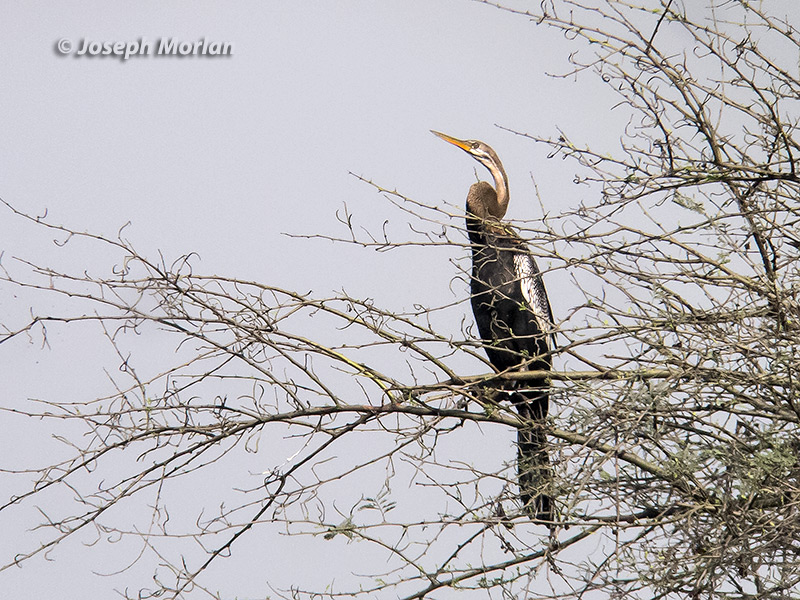
The number of species included in the genus varies between two and four depending on the authority. Based on a
2012 study by Schodde et al. most recent authorities recognize four species as follows:
- Anhinga (Anhinga anhinga)
- African Darter (Anhinga rufa)
- Oriental Darter (Anhinga melanogaster)
- Australasian Darter (Anhinga novaehollandiae)
Of these, the Oriental Darter is the rarest. It is classified as "near threatened" by the IUCN. The world population is estimated at about 4,000 individuals and declining. The main threats are habitat loss, hunting, pollution and disturbance at nesting colonies. Sexes are similar but males have extensive black spotting on their throat. I believe the top individual is an adult female while the bottom is immature, sex uncertain. All darters forage by swimming partially submerged using their sharp bill to spear fish. When under water they can control the amount of air in their subcutaneous air-sacs by partially spreading their wings. As adults their nostrils are fused shut and their tongue is just a stub. Digiscoped with Panasonic DMC-LX5 | Nikon FieldScope III | 30XWA | hand-held (no adapter)
References:
BirdLife International (2016) Species factsheet: Anhinga melanogaster. Downloaded from http://www.birdlife.org
on 21/06/2016.
Orta, J., Garcia, E.F.J. & Boesman, P. (2016). Oriental Darter (Anhinga melanogaster). In: del Hoyo,
J., Elliott, A., Sargatal, J., Christie, D.A. & de Juana, E. (eds.). Handbook of the Birds of the World
Alive. Lynx Edicions, Barcelona. (retrieved from http://www.hbw.com/node/52666
on 21 June 2016).
Schodde, R., Kirwan, G.M. and Porter, R. (2012). Morphological differentiation and speciation among darters (Anhinga).
Bulletin British Ornithologists' Club 4: 283-294
Rasmussen, P.C. & Anderton, J.C. (2005) Birds of South Asia. The Ripley Guide. Vols. 1 and 2. Smithsonian Institution
& Lynx Edicions, Washington, D.C. & Barcelona.